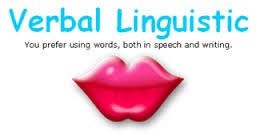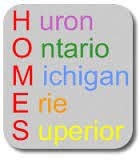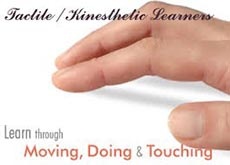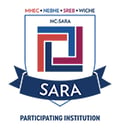 CHALLENGE
CHALLENGEWhat is My Learning Style?
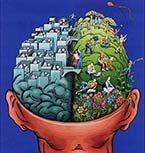
What is my learning style? How will knowing my learning style help me to improve my study habits?
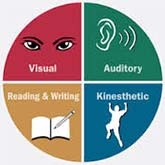
Since we all learn in different ways, the best study techniques vary from person to person. In order to study effectively, you must understand your personal learning style and which study approach works the best for you.
Take a Learning Style Inventory Test.
After you review your results and discover your learning style, click on one of the links below to find out how to tailor your learning style to your own style of learning:
If you are a VERBAL learner, you love to read and write, and express yourself both verbally and in writing, click here..
If you are a SPATIAL-VISUAL learner, you like to use pictures when you learn.
If you are an AURAL (AUDITORY– MUSICAL) learner, you like working with sound and music. You may play a musical instrument or sing. You have a good sense of rhythm and you likely notice the music playing in the background of tv shows or movies. It is likely that you remember best when you associate sound and music with what you are learning.
If you are a KINESTHETIC (PHYSICAL) learner, you like to move around and use your hands, and use your sense of touch.
If you are a LOGICAL (MATHEMATICAL) learner, you use reasoning and logic when you learn.

If you are a SOCIAL (INTERPERSONAL) learner, you like to work in groups and learn best with other people. You have strong communication skills, both verbal and non-verbal. You are typically the person that others look to for advice, and you are sensitive to other people’s needs. Additionally, social learners tend to engage in conversation with instructors and classmates before or after class.
If you are SOLITARY (INTRAPERSONAL) learner, you like to work alone and study alone.
Verbal learners benefit from:
- Talking themselves through material that they are studying.
- Reading important information out loud in order to retain it. When reading out loud, do so in a dramatic and expressive way - avoid monotone!
- Making rhymes, rhythms an other verbal
connections with what they are studying.
- Using Mnemonics (ne-mon-icks) to help remember phrases
and equations.
For example:
“Please Excuse My Dear Aunt Sally” is often used to remember the order of operations (Parentheses, Exponents, Multiplication, Division, Addition, Subtraction).
“My Very Eager Mother Just Served Us Nuts” to remember the order of the planets, (Mercury, Venus, Earth, Mars, Jupiter, Saturn,Uranus and Neptune)
 |
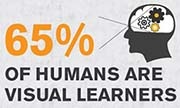 |
Spatial-visual learners learn best when they can associate an image or picture with what they are learning. For example, when learning about history, visual learners benefit from looking at a map to see the areas that the historical events they are studying occurred. Spacial-visual learners typically like to draw and doodle, and are able to retain information that they are listening to while doing so. If you are a spatial-visual learner, you can try the following:
- Create a visual diagram (charts, mind maps, etc) of what you are studying - you can even replace words with pictures in your diagram.
- Look up pictures and videos relating to what you are studying so that you can connect these visuals with your notes and textbook.
 |
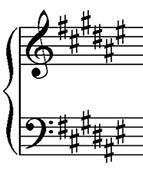 |
Auditory learners may try the following:
Use rhythm and sound to remember material that they are studying. Create a song or a jingle about the material you are studying
Focus on music and sound to create visuals of material that they study. For example, when learning about World War II, Google popular music from the time to help associate events during that time period with the music that people listened to.
Use music to boost your spirit and motivation when you study. If certain music gets you energized, play it before you study. If there is music that relaxes and focuses you, play it during your study time.
Use music to “anchor” your emotions and state of mind. When you need a boost at test time, you can recall the state of mind you were in while you studied without needing the music.
Kinesthetic learners like to move around/exercise as they think out issues and problems. Kinesthetic learners would rather go for a run or walk than sit. Kinesthetic learners also like to work with their hands. So, if you are a Kinesthetic learner, you might want to try the following techniques:
- Breathing and relaxation techniques while studying are very effective for kinesthetic learners.
- Draw diagrams and charts when you study. Using your hands and doing the creating and the physical task of drawing out a chart will help you to retain the information that you are studying.
- Physically touch objects while you study. Squeeze a realization fist ball, toss or bounce a small ball while you study. Use flashcards because you can move them around and touch them.
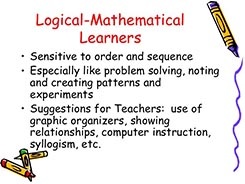 |
 |
Logical learners learn best when they work through problems step by step and material one topic at a time. Logical learners like to make “to-do” lists as well as set goals and agendas. If you are a logical learner, you can try any or all of the following:
- Don’t just “recite” your notes, try to understand the meaning and content of what is in your notes and your textbook.
- Make links and connections of the material you are studying. Try to determine how one topic you are studying relates to another.
- Make a “system” of what you are studying. Try to perceive all of the parts of the material you are studying to equal a “whole.” For example, if you are studying the Civil War in history class, try to examine and understand how each incident that led up to the war played a role in causing the divide between the north and the south.
- Do not over-analyze what you are studying! Often this could lead you to “freeze” and paralyze your ability to study as well as retain information.
Social learners study more effectively when they exchange information and ideas with others in a group setting.
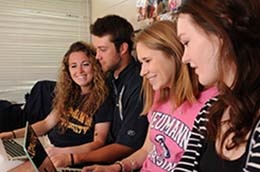 |
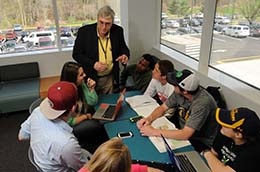 |
Try the following:
- Arrange study groups with people in your class who seem to have the same academic motivation as you. That way, you all contribute valuable ideas and can help each other with the course material.
- Review and share class notes with each other - you may have missed lecture material that a group member was able to record and vice-versa.
- Try teaching the material to each other. Each group member takes a different topic of study and reteaches it to the other group members. This is a great way to ensure that you know and understand the information - often we learn the most about a subject when we teach it!
Solitary learners work best alone, they typically shy away from working in groups.
 If you are a solitary learner, you can try any or all of the following:
If you are a solitary learner, you can try any or all of the following:
- Set goals for yourself during your study time. How many pages of notes will you review or textbook pages will you read before you take a break? At each break, review independently what you read by reciting it out load, or by writing a few of the key facts down.
- Discover a personal interest in what you are studying. Ask yourself questions about the layout of the content. For example, why might the writers and publishers of the text book laid out the chapter in a specific way?
- As you study, write down information that you may not be clear about on a sheet of paper so that you can ask your professor to explain it to you before or after the next class. If the professor is not available, visit the ARC to schedule a meeting with a tutor in that subject who can work through your questions with you.
A Guide to Neumann University's MS in Education — Social Emotional Learning Program

